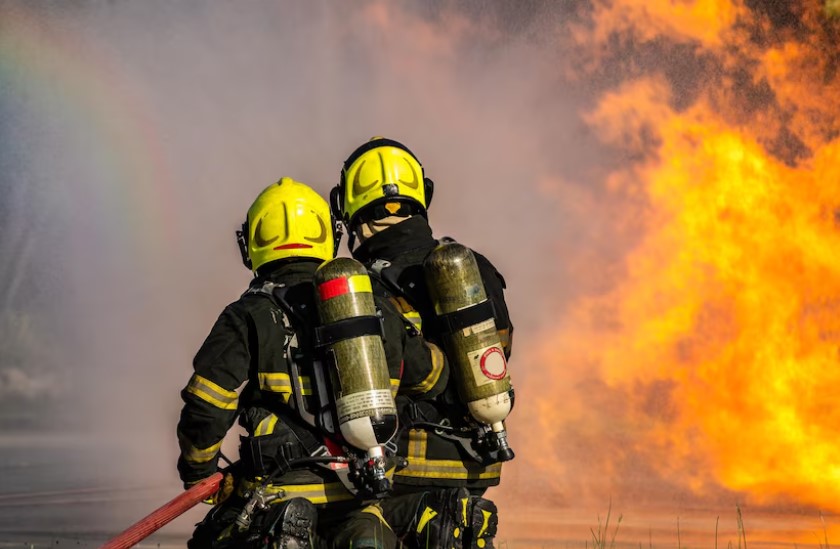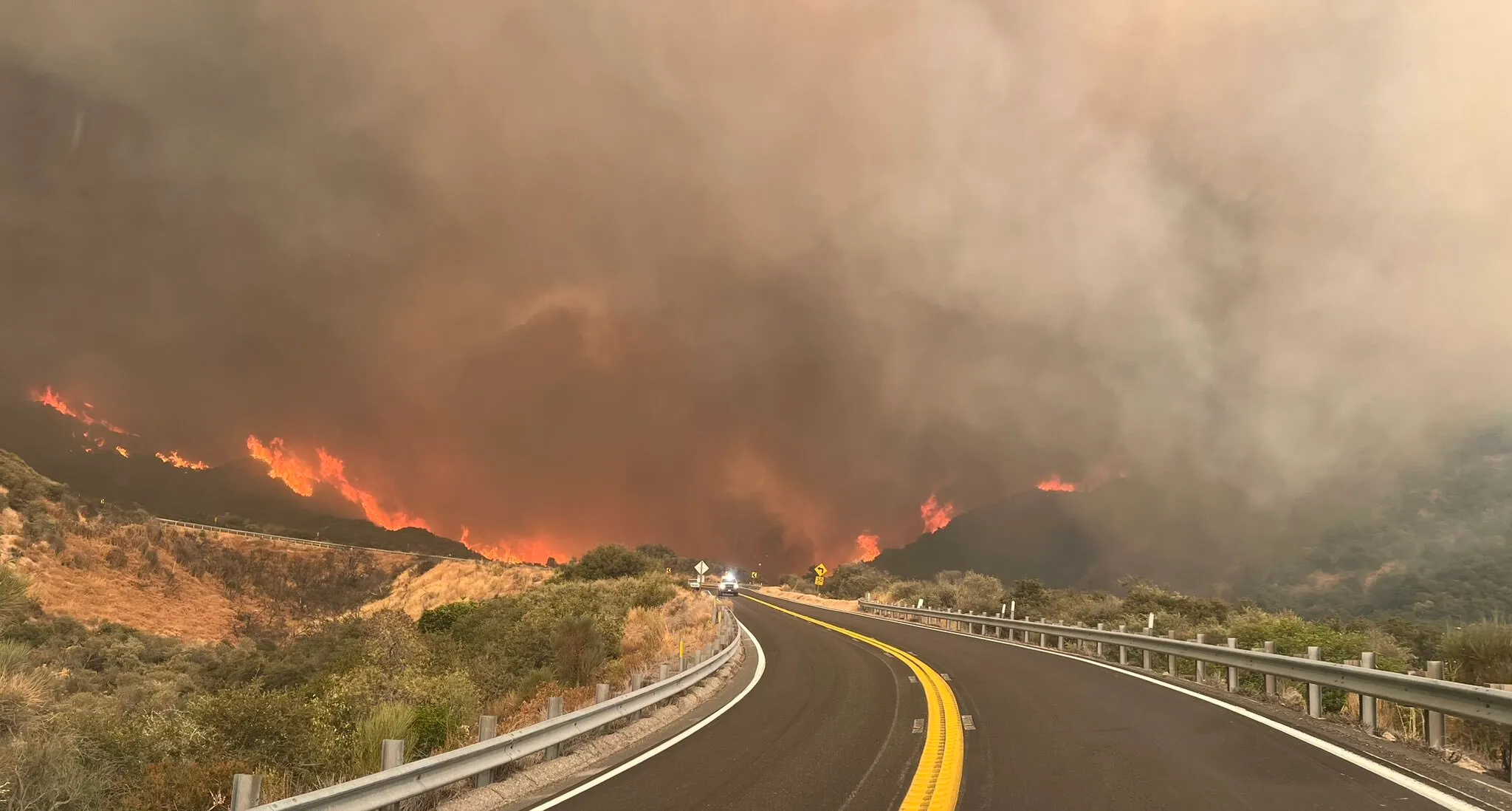The Line Fire has rapidly become a critical situation in San Bernardino County, California, compelling local authorities to issue urgent evacuation orders. Igniting in early September 2024, this wildfire has quickly escalated, capturing the attention of emergency services and residents alike. The Line Fire started in the rugged terrain of the San Bernardino Mountains, an area known for its dense vegetation and challenging firefighting conditions. The fire’s initial outbreak was marked by explosive growth due to dry conditions and high winds, spreading from its origin point and affecting multiple communities.
Rapid Spread and Growth of the Fire
The Line Fire has demonstrated an alarming rate of expansion, growing from an initial 3,800 acres to over 17,000 acres within a few days. Several factors have contributed to this rapid spread. California fires are often fueled by a combination of weather conditions and terrain, and the Line Fire is no exception. Recent weather patterns have included high temperatures and gusty winds, which have exacerbated the fire’s growth. The rugged terrain of the San Bernardino Mountains has also presented significant challenges, as the uneven landscape makes it difficult for fire crews to access and contain the blaze effectively.
The fire has primarily affected the communities of Highland, Running Springs, and Arrowbear Lake. These areas, nestled in the San Bernardino Mountains, have been severely impacted by the Line Fire. The rapid spread has not only threatened homes and businesses but has also disrupted daily life and local infrastructure.

Evacuation Orders and Impact on Local Communities
In response to the escalating threat of the Line Fire, mandatory evacuation orders have been issued for several communities, including Running Springs, Arrowbear Lake, and other nearby areas. These evacuations are a crucial measure to ensure the safety of residents, but they have also posed significant challenges. Residents have faced difficulties such as traffic congestion as they attempt to leave the affected areas. Shelters and temporary accommodations are being set up, but the sheer scale of the evacuation has strained local resources.
For many residents, the evacuation process has been chaotic and stressful, with some struggling to find safe places to stay. The San Bernardino fire has led to a massive exodus, and the need for coordination between local authorities and emergency services has never been more apparent.
Firefighting Efforts and Challenges
The response to the Line Fire has involved a concerted effort from various firefighting agencies. Fire crews have employed a range of techniques to combat the blaze, including the use of hand lines, hoses, and aerial resources such as helicopters and water-dropping planes. Despite these efforts, the Line Fire has posed significant challenges due to the extreme heat and difficult terrain.
High temperatures have not only intensified the fire but have also placed additional strain on firefighting personnel. The rugged terrain of the San Bernardino Mountains has made access difficult, with steep slopes and dense vegetation complicating containment efforts. As of now, the containment status of the fire remains precarious, with crews working tirelessly to establish containment lines and prevent further spread.

Weather Conditions Exacerbating the Situation
The impact of weather conditions on the Line Fire has been profound. The region has been experiencing a heatwave, with temperatures soaring to dangerous levels. This extreme heat has contributed significantly to the fire’s rapid growth. Additionally, red flag warnings have been issued, indicating critical fire weather conditions that include strong winds and low humidity.
The presence of pyrocumulonimbus clouds—large, towering clouds formed by intense heat from the fire—has further complicated the situation. These clouds can produce outflow winds, which may cause the fire to spread unpredictably. The forecast for the coming days suggests that adverse weather conditions will continue, potentially impeding firefighting efforts and prolonging the crisis.
Government Response and Public Safety Measures
In response to the escalating Line Fire, Governor Gavin Newsom has declared a state of emergency California, allowing for additional resources and support to be mobilized. This declaration underscores the severity of the situation and facilitates coordination between state, local, and federal agencies. Emergency response teams are working collaboratively to manage the crisis and provide support to affected communities.
Public safety measures have been put in place, including the establishment of evacuation centers and the dissemination of safety guidelines to residents. Authorities are advising those in affected areas to remain vigilant and to follow evacuation orders promptly. The coordination between various levels of government and emergency services is crucial to managing the fire in San Bernardino effectively.
Impact on Infrastructure and Local Economy
The Line Fire has had a significant impact on local infrastructure and the economy. Road closures have been implemented on major routes such as Highway 330 and Highway 18, disrupting transportation and access to the affected areas. These closures have created logistical challenges for both residents and emergency responders.
The local economy, particularly tourism, has also been affected. Popular destinations like Lake Arrowhead and Big Bear, which attract visitors throughout the year, have seen a decline in tourism due to the fire. The economic impact extends beyond tourism, affecting businesses and services in the region.
Future Outlook and Preparedness
Looking ahead, the forecast for the Line Fire remains uncertain. Firefighters are working diligently to contain the blaze, but the ongoing adverse weather conditions and challenging terrain pose significant hurdles. Long-term preparedness and fire prevention strategies will be essential to mitigating future risks.
Community readiness and emergency response plans will play a crucial role in ensuring that residents are prepared for potential future incidents. Enhancing fire preparedness and response strategies will be vital in managing and mitigating the impact of wildfires in the region.
Conclusion
The Line Fire has presented a serious challenge to San Bernardino mountain towns, with its rapid spread and impact on local communities. As the situation continues to develop, ongoing vigilance and cooperation with authorities will be essential. Residents are encouraged to stay informed, follow safety guidelines, and support one another during this crisis. The response to the Line Fire highlights the importance of preparedness and community resilience in the face of such emergencies.
By remaining engaged and proactive, both authorities and residents can work together to navigate the challenges posed by the Line Fire and ensure a safer and more resilient future for San Bernardino County.





